The shiny blister beetle on the following photograph ...
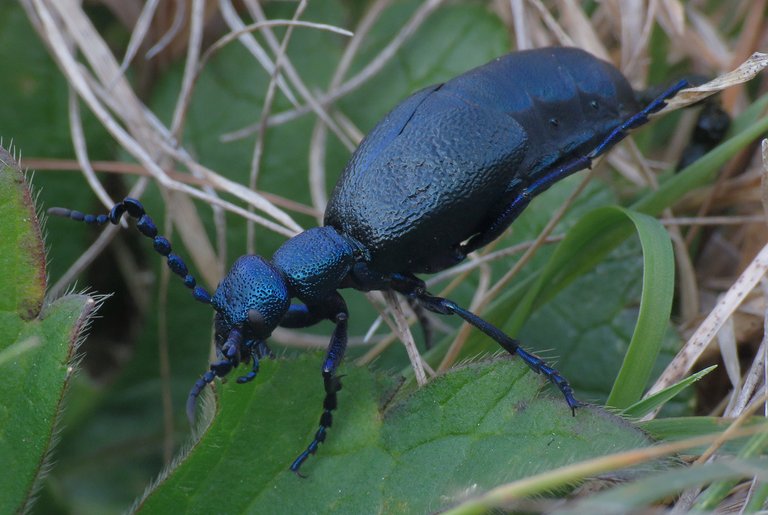
... the Meloe violaceus ...
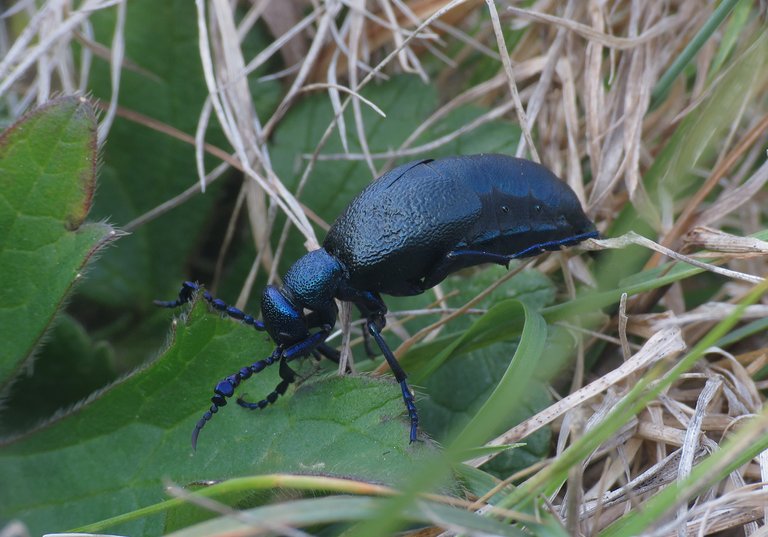
... was chewing some juicy leaves hidden among the tough, fibrous ... partially dry grass off the coastal meadow ...
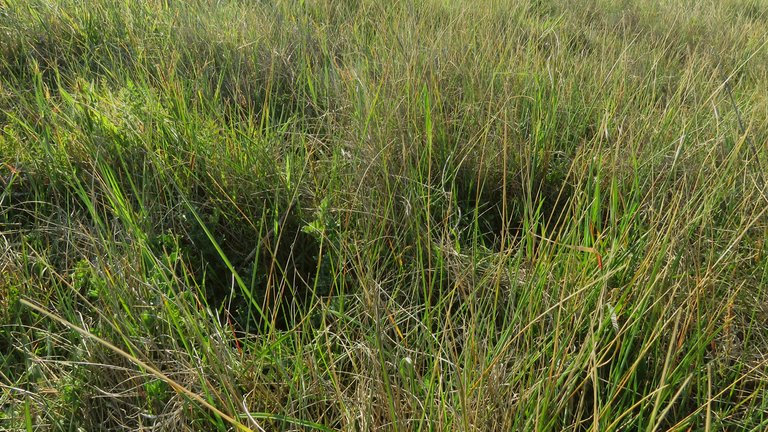
... and I noticed what looked like a series of mysterious black holes in this sea of grass ...
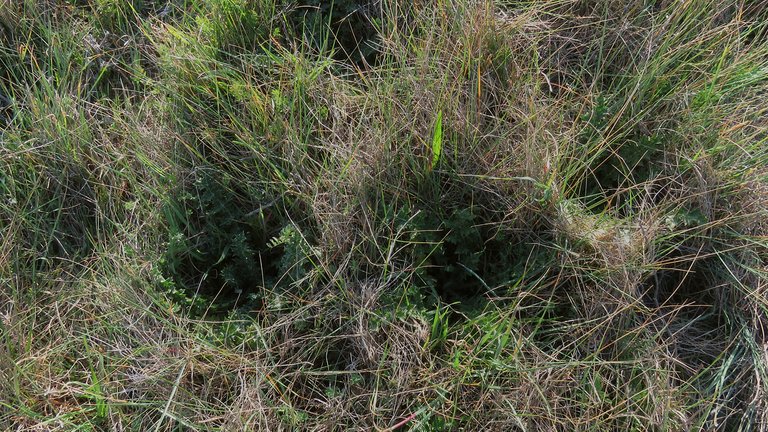
... when I came closer ...
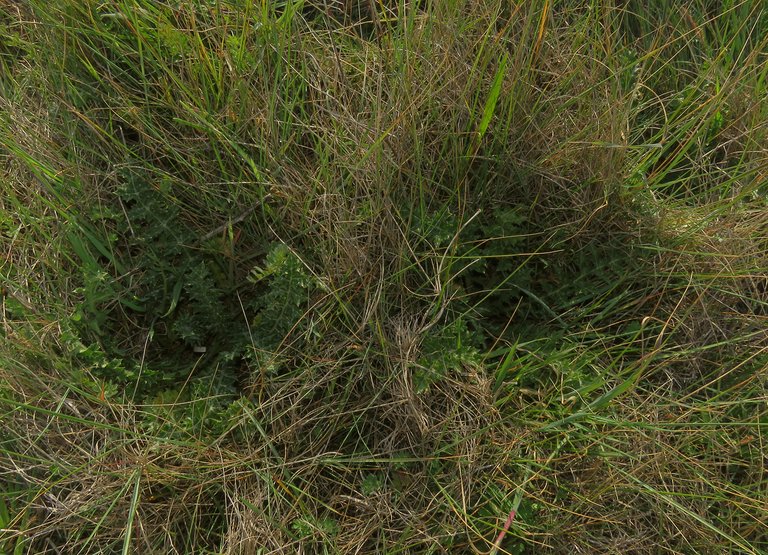
... and took a look from above ... I saw that this cool phenomenon was created by the growth of another plant ...
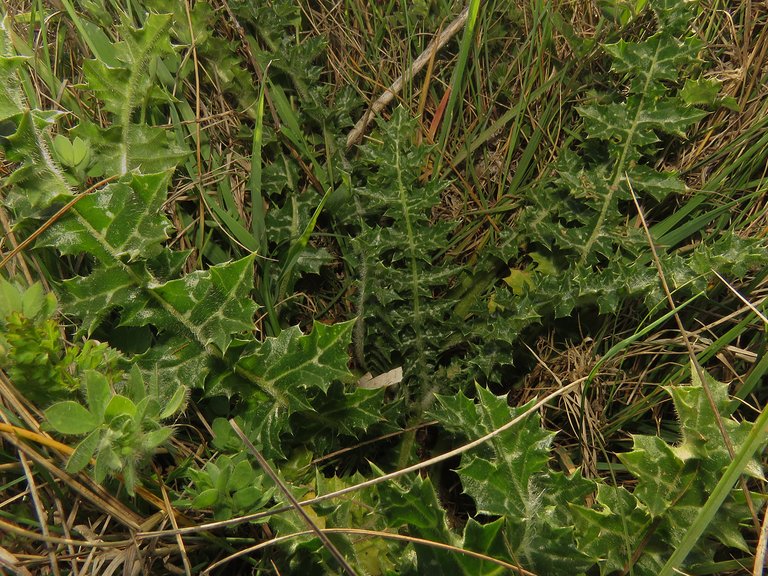
... the Scolymus hispanicus ... as the robust thistle grows and develops, it pushes the surrounding grass, and that's how these interesting hollows are made. They look like flower pots exposed to the sun, dense grass doesn't block the way, so the conditions are favorable to quite a few delicate young plants that you can see growing among the thorny Scolymus hispanicus leaves ... on the following photograph ...
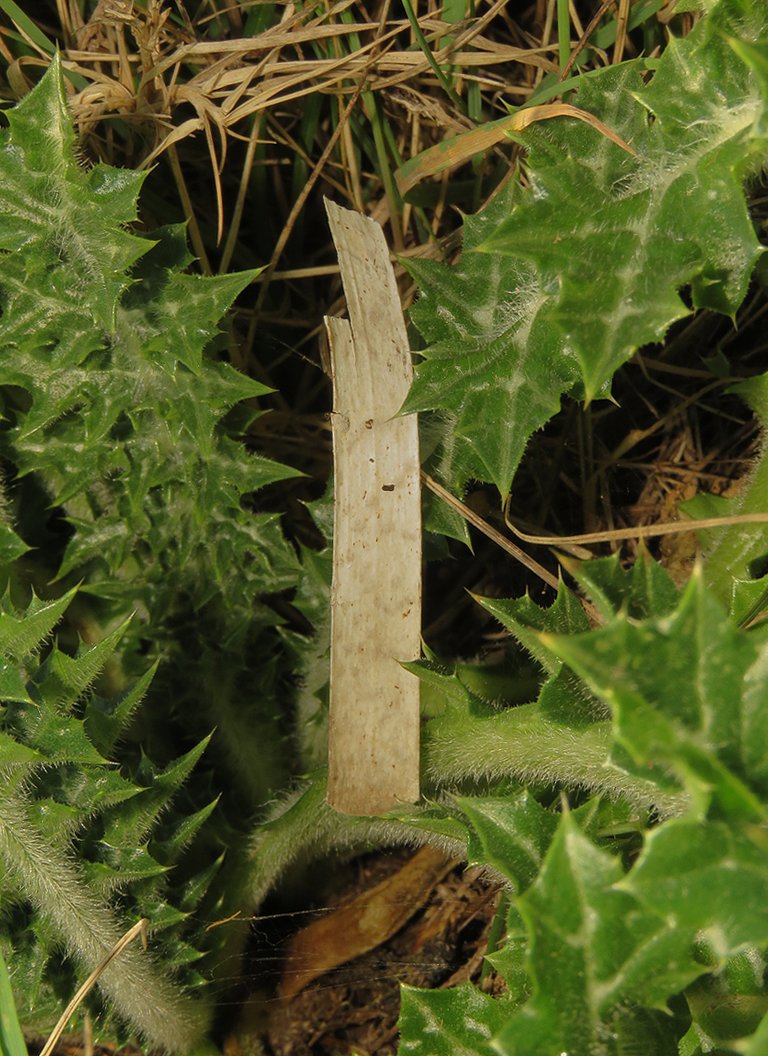
... you can see the dried out fragments of another grass ... a very different kind of grass. Since all this vegetation grows very near to the sea, just a few meters from the coastal rocks, it gets regularly salted by big waves during the windy days that beside the salt, often bring also interesting little fragments from the sea. Here, in this little thistle - garden, you can see a piece of the Mediterranean tapeweed (Posidonia oceanica) ... a flowering plant that creates dense underwater meadows on the sandy seabed, in shallow, sunlit waters from 1 to 35 meters.
When I took a better look, using the macro lens, I found this minuscule, sponge - like structure near the edge of the desiccated leaf. This is a shell of some Foraminifera, a single-celled organism that creates complex, elegant shells visible to naked eye, made of calcium carbonate or agglutinated sediment particles.
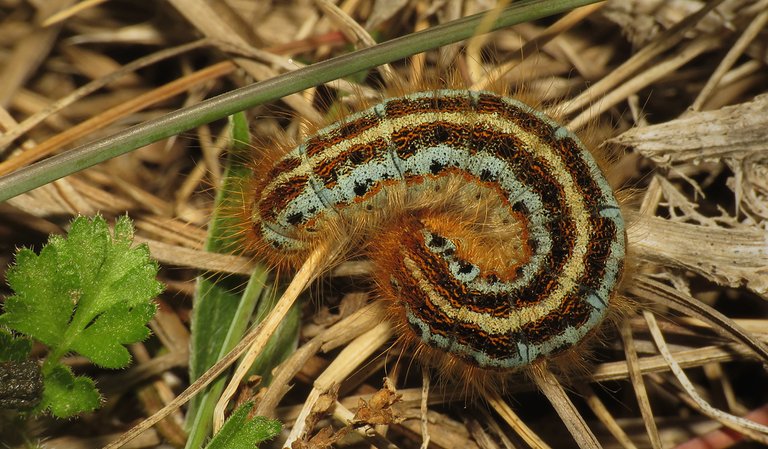
Just a few meters further ...
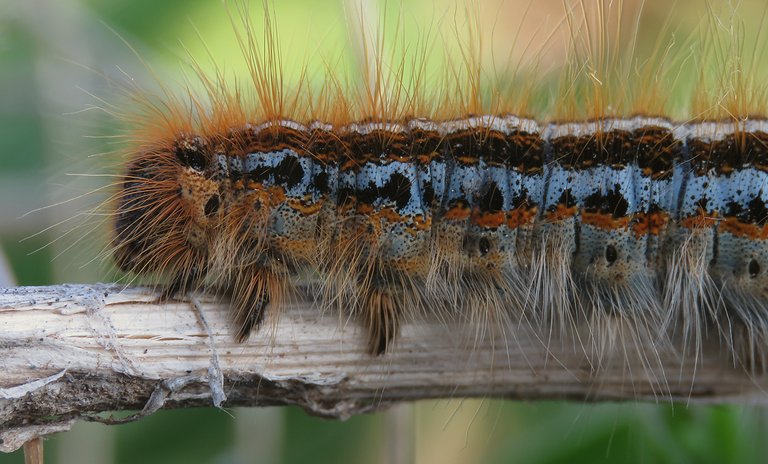
... I encountered this colorful caterpillar ...
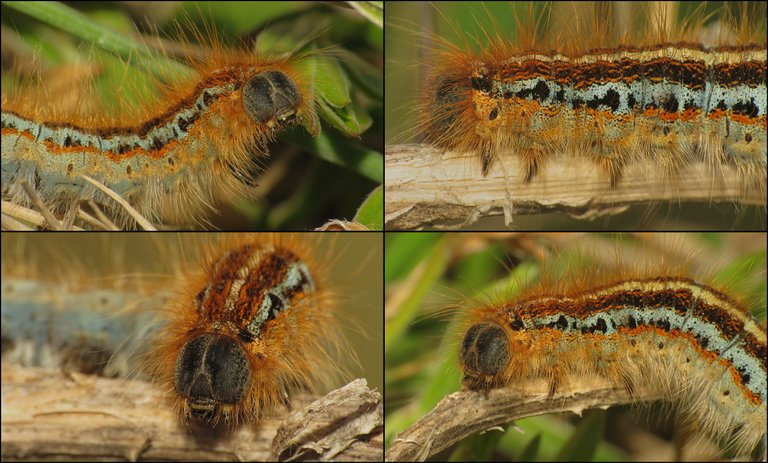
... of the Malacosoma castrense moth ... when these larvae were younger, they weren't so vividly colored, and they roamed the area in swarms. You can take a look at that phase in their life in the NEWS FROM THE MEADOWS from 05. April 2021, here is the link to that old post : https://ecency.com/hive-127788/@borjan/news-from-the-meadows-05
Now they are scattered across the vast meadow, much bigger and more colorful ...
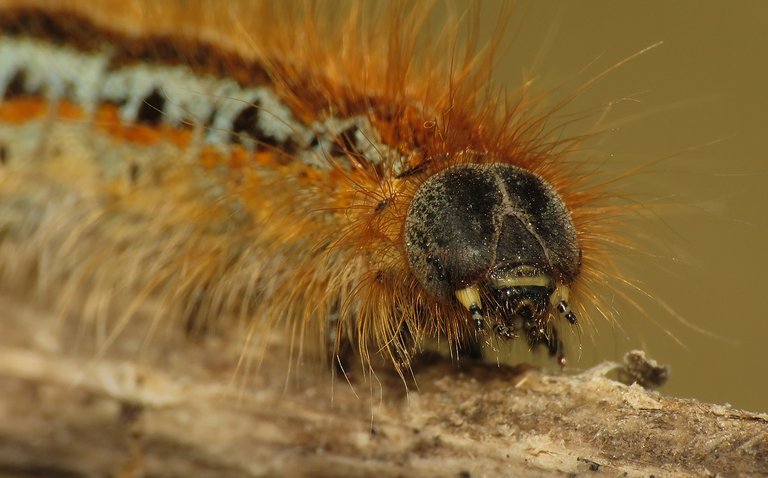
... usually I see one of them every 10 - 20 meters or so.
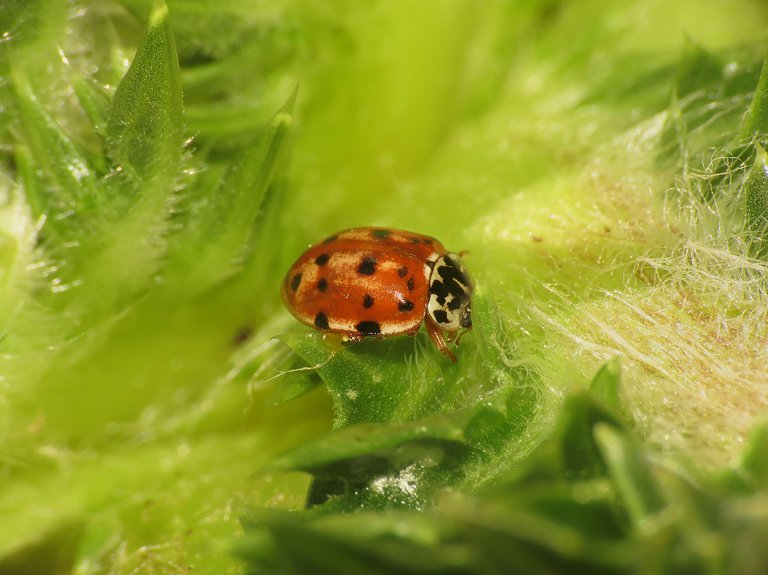
The lady beetles were very active today ...
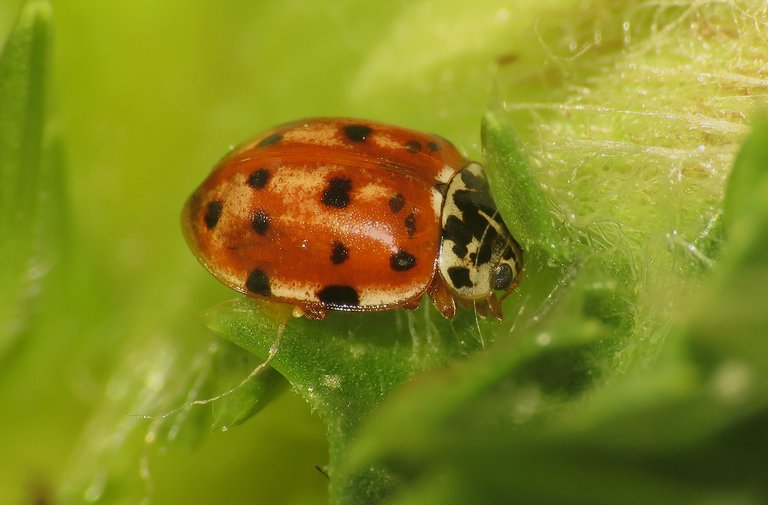
... some of them had many black dots on the mostly red background of their elytra ...
... and some only some orange - cream - colored markings with only a few minuscule black dots ...
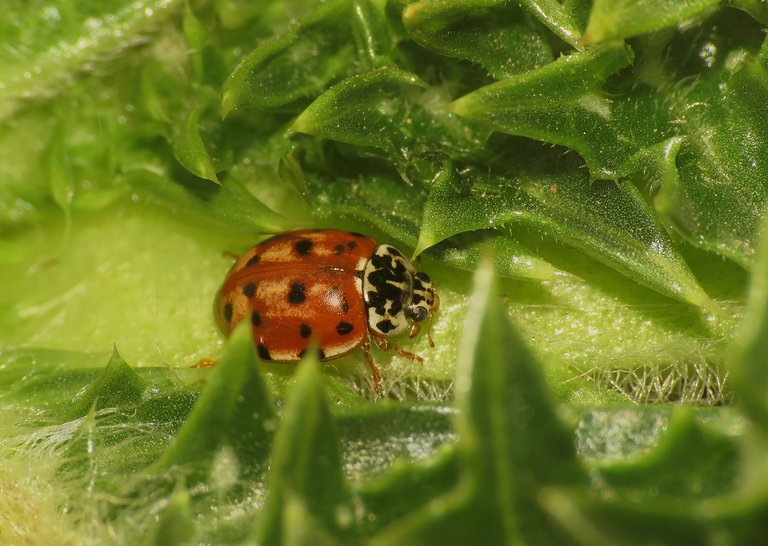
... despite the different look of these Coccinellidae photographed among the thorns of the young Scolymus hispanicus plant, they belong to the same species ... the Harmonia quadripunctata. Like most lady beetles, Harmonia quadripunctata is a predator that feeds mainly on aphids. Although the differences between the lady beetles that you just saw are clearly visible ...
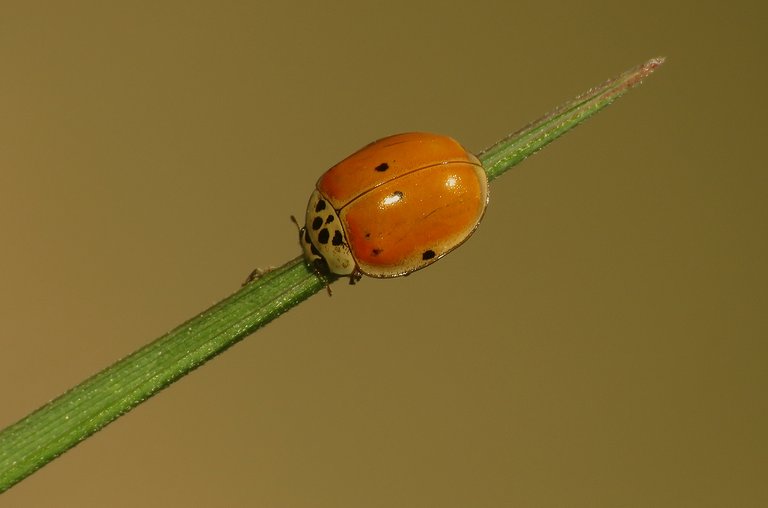
... they can be even more pronounced in some species ... here you can see the orange version of the Adalia decempunctata lady beetle ...
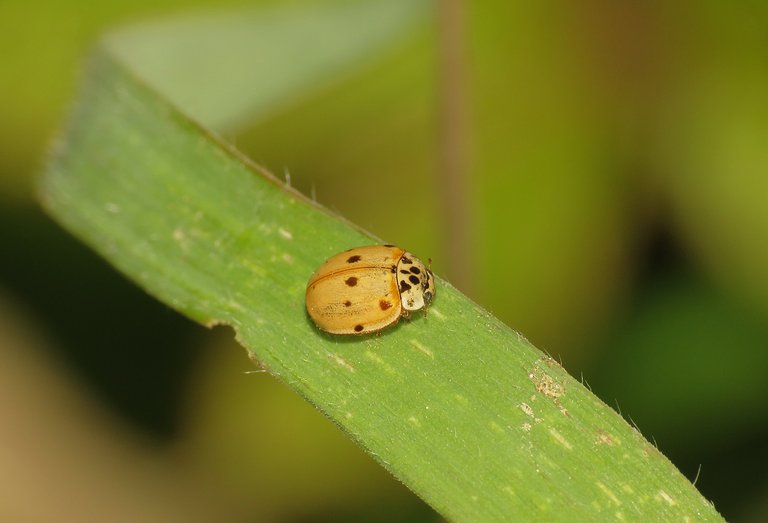
... here is the yellow version with a few more black dots ...
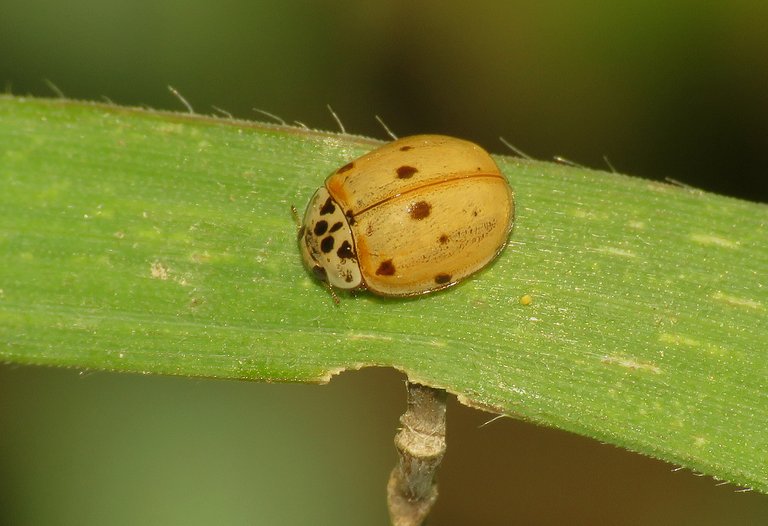
... photographed on the long blade of grass ...
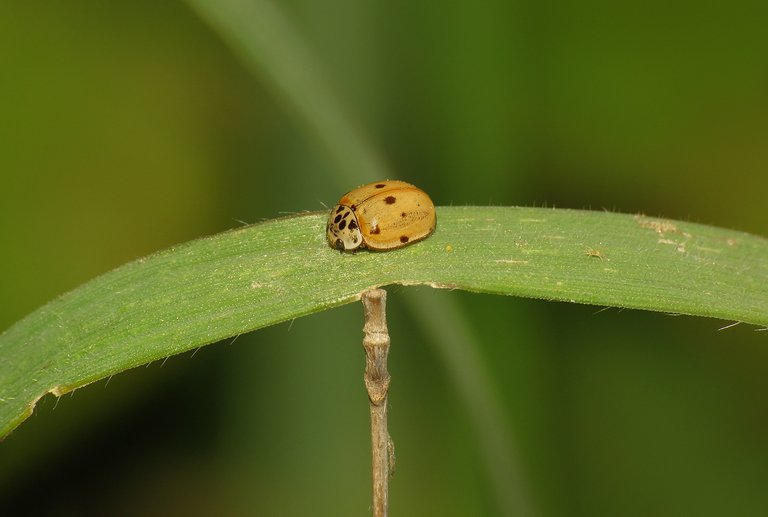
... on the wild oat (Avena sativa) plant ...
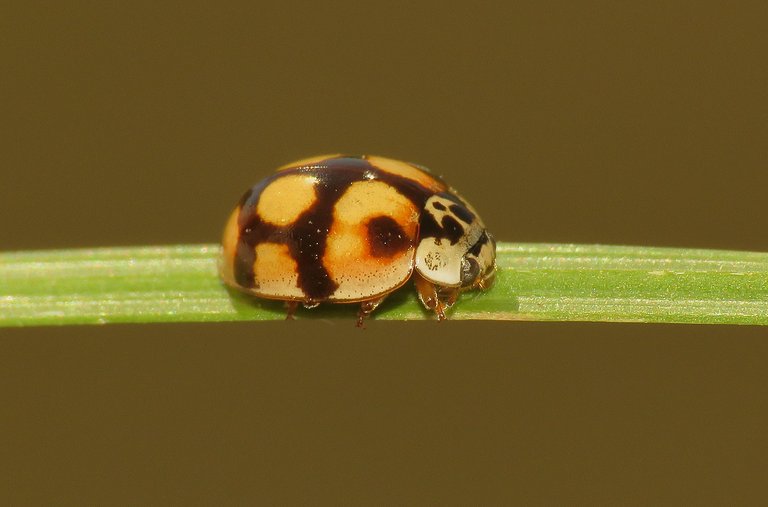
... and here ... resting on a nearby plant of the same kind ...
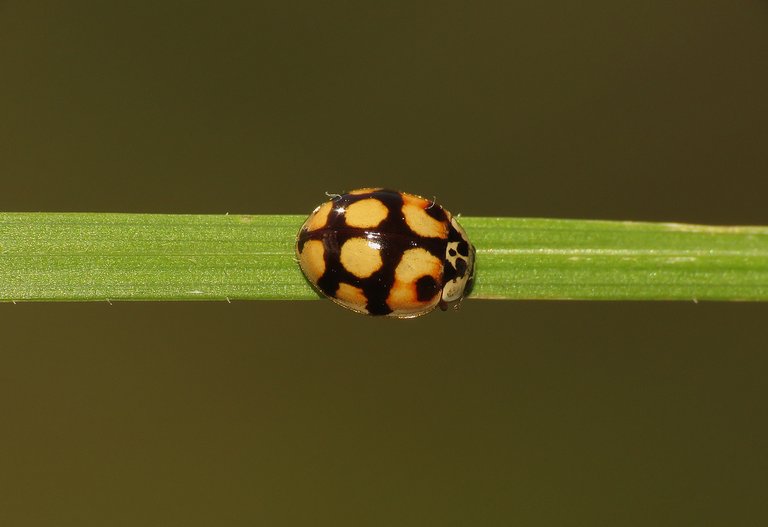
... is a pretty different looking Adalia decempunctata.
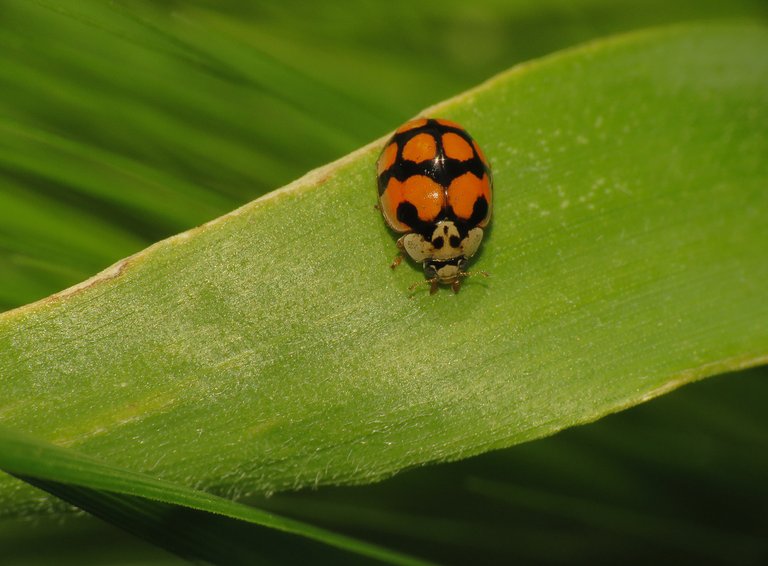
A few meters further, I found a similar looking one, with more vividly colored markings.
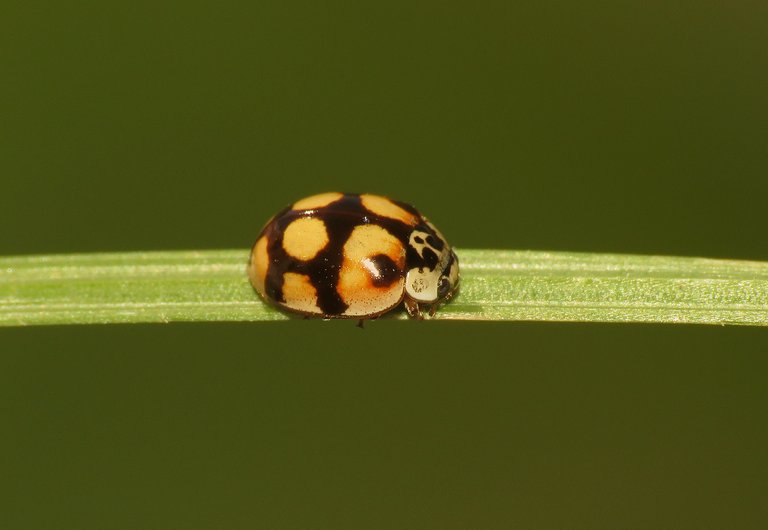
This is another predatory species that feeds mainly on aphids. After this slightly confusing bunch of lady beetles ...
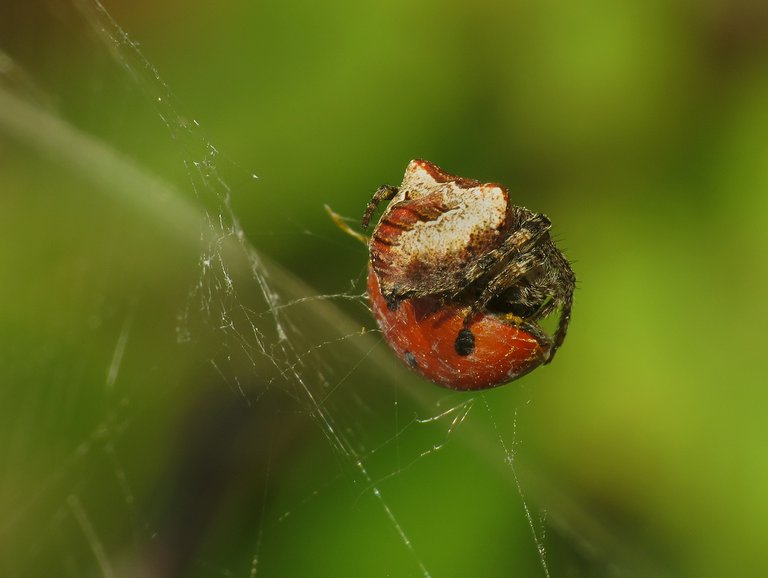
... I photographed the classic - looking Coccinella septempunctata ... that ended up caught in the cobweb ... here you can see the Gibbaranea bituberculata spider feeding on the lady beetle.
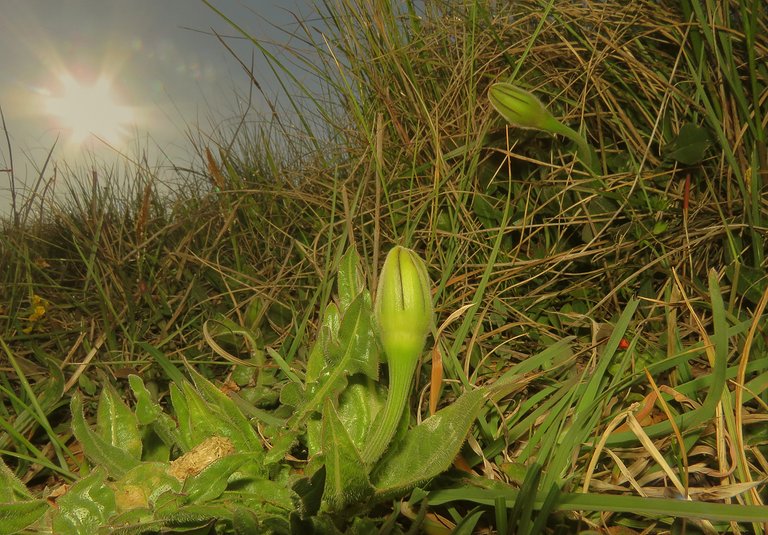
Some time and about a hundred meters later, I sat down in the grass ...
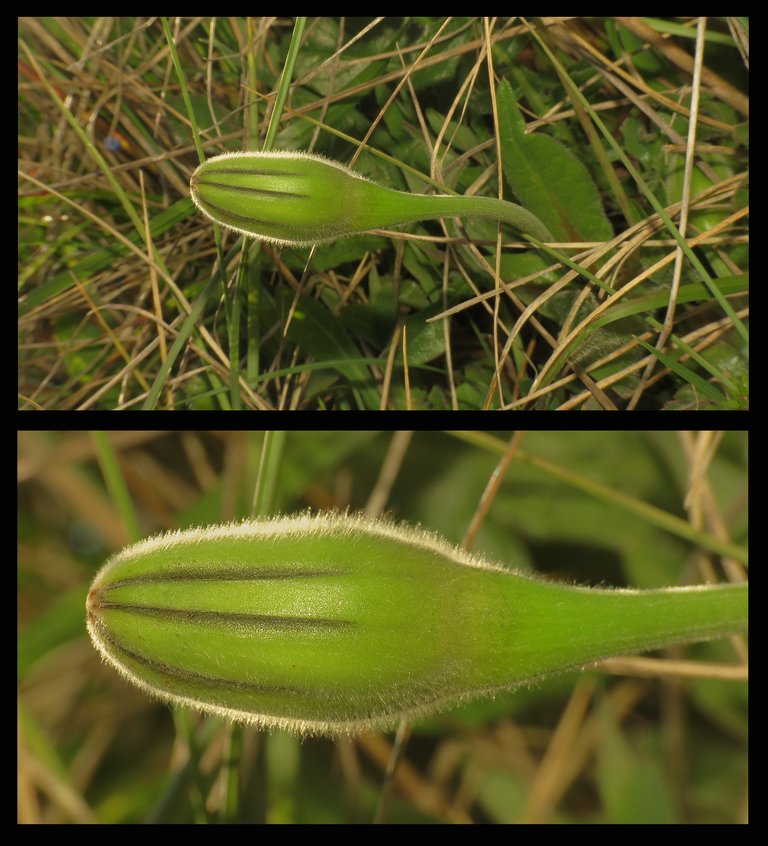
... to photograph the big, juicy flower buds of the Urospermum dalechampii plant ...
... this thing will turn into a big yellow flower some days from now.
A bit later, while rambling through the grass, I encountered this minuscule fly, the Thaumatomyia notata. Larvae of this species usually live among the roots of grasses ... but they don't damage the plants. The larvae are carnivorous and feed on root aphids. Adult flies feed on nectar of flowers and various other sweet liquids and excretions, like those from the ripe and rotting fruits, ad example.
After taking this shot ...
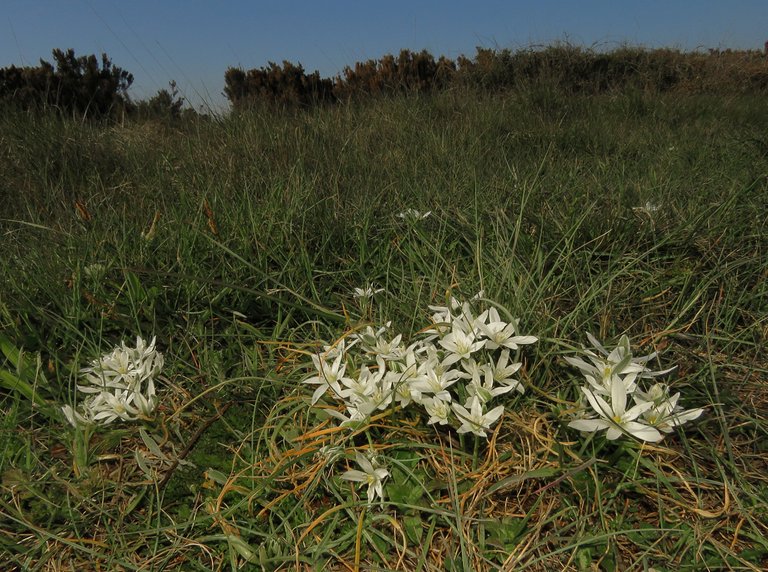
... I noticed some flowers in the distance ...

... and, when I came closer ...
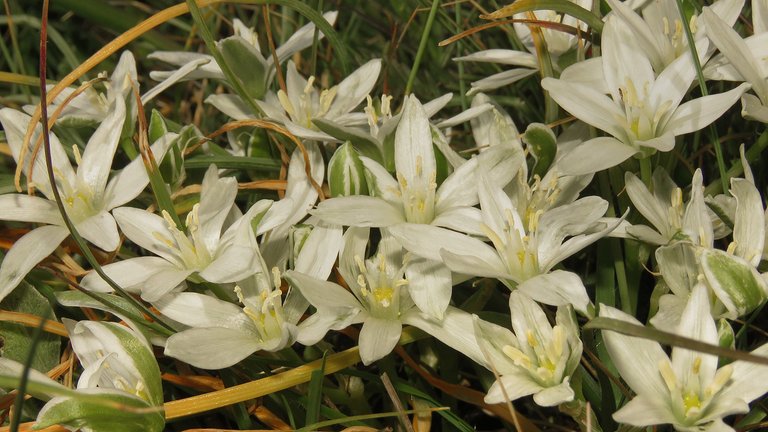
... I saw that these are the Ornithogalum umbellatum flowers.
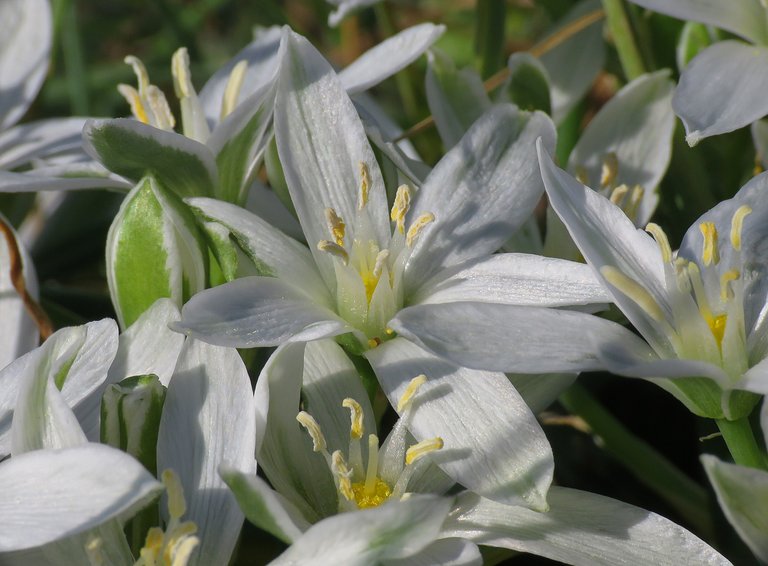
Various Ornithogalum species are commonly known as Star-of-Bethlehem plant ... due to the white stellate flowers.
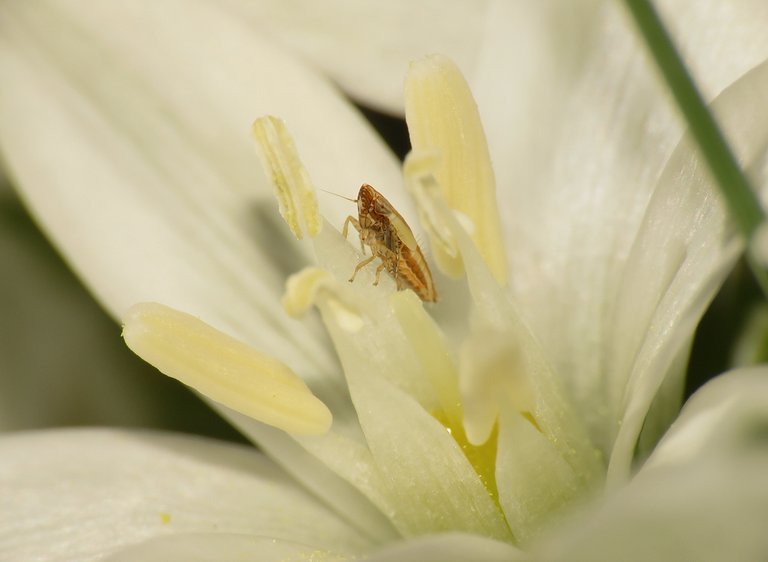
In the center of one of those flowers I noticed a leafhopper nymph ... I took this shot, and then ...
... the minuscule insect jumped on the petal, of another, pretty distant flower.
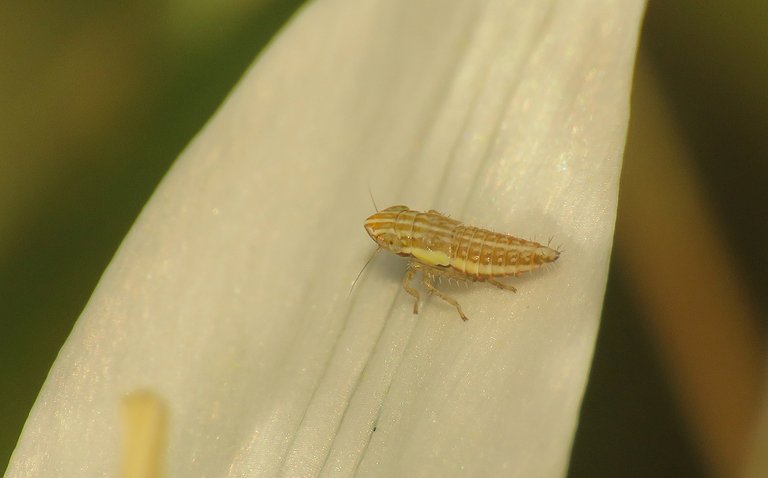
I can't tell you the exact species here ... maybe if I photographed an adult, I would be able to find the name of the species ... but right now, with only these shots at my disposal, after an hour-long Internet search, I still don't know what kind of Cicadellidae is this.
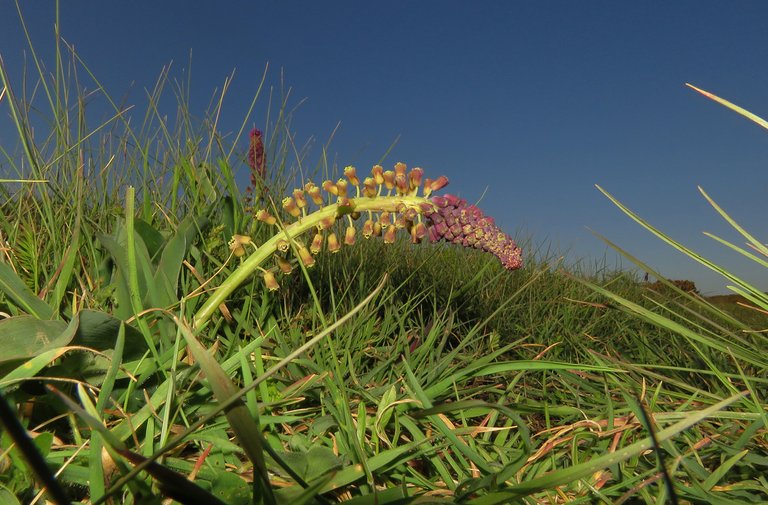
A bit further I photographed another beautiful plant ...
... the flower - bearing stem of this Leopoldia comosa was curved like a rainbow.
After photographing this glittering little moth, and here again I don't know the exact species ...
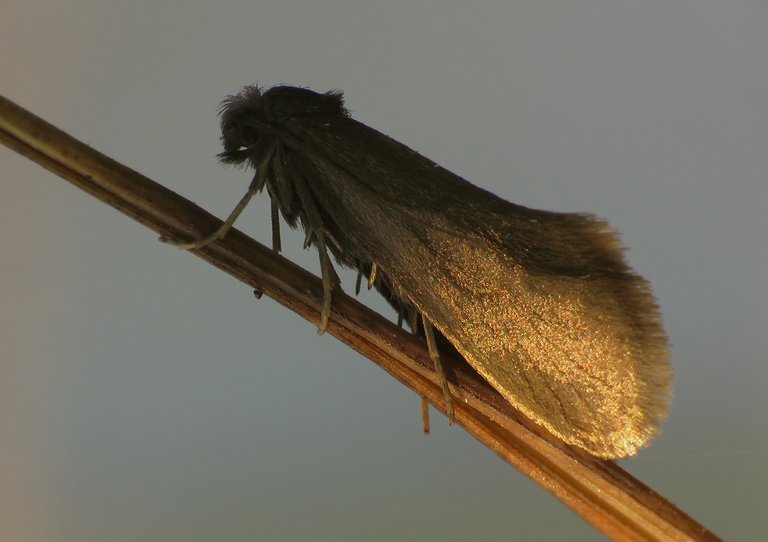
... I was on my way home ... as always in these posts on HIVE, the photographs are my work ... and as always in this NEWS FROM THE MEADOWS, they were all taken today.
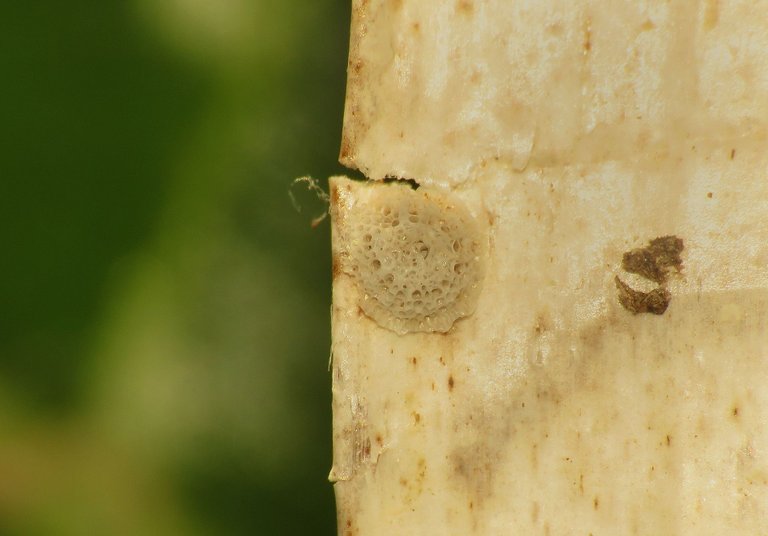
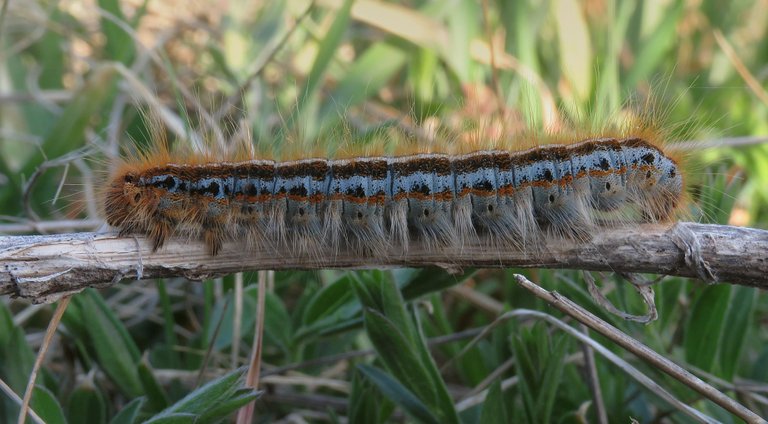
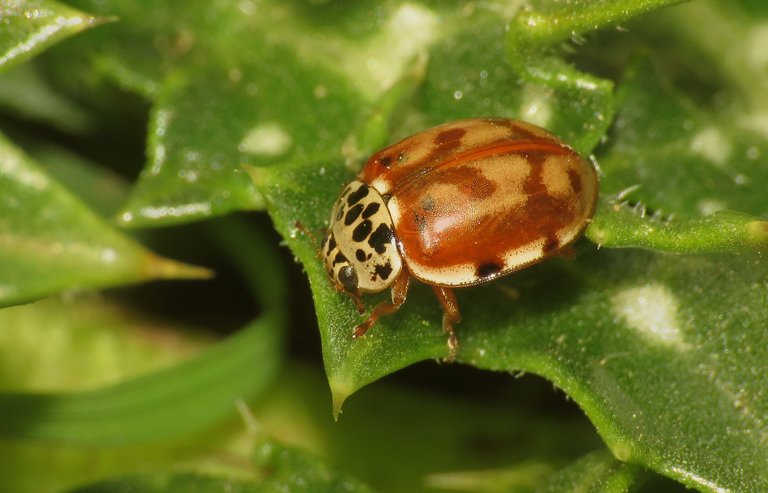
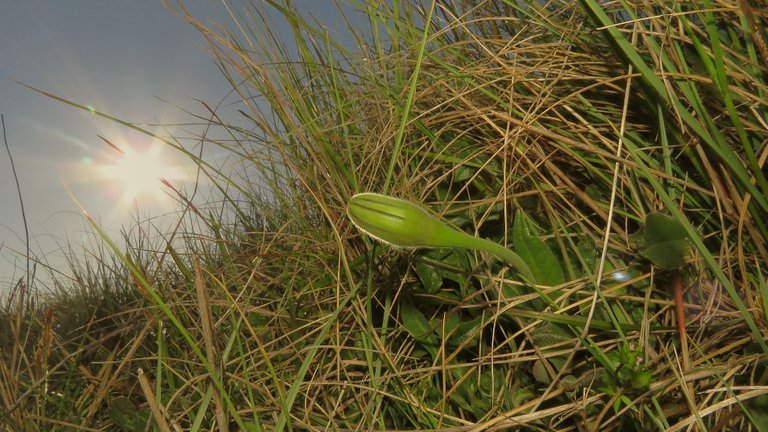
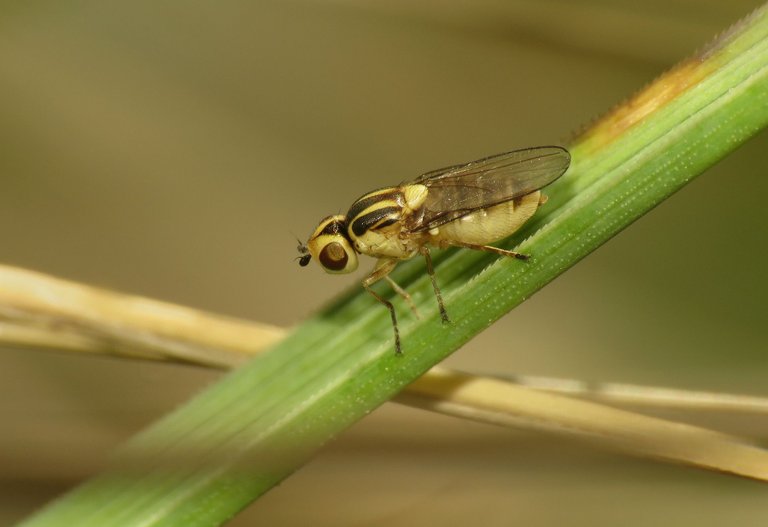
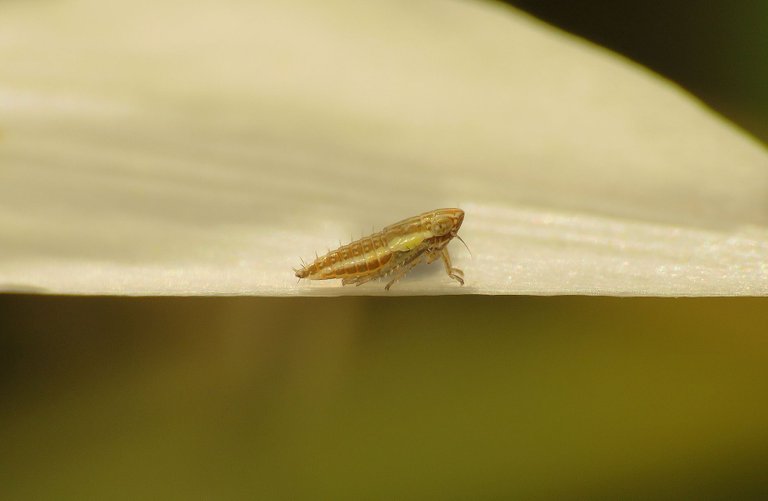
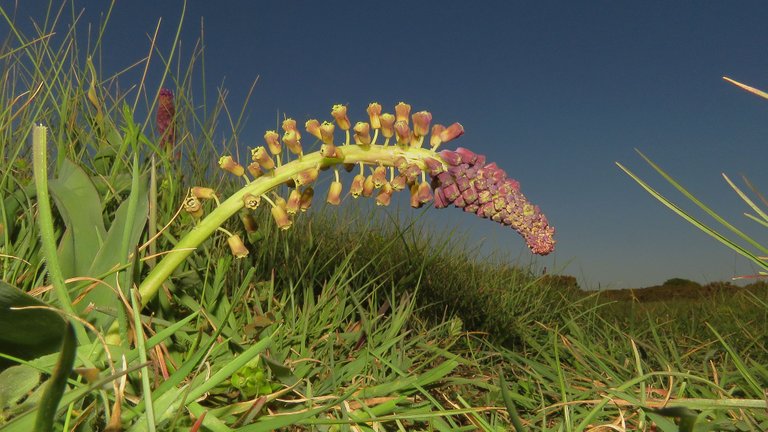
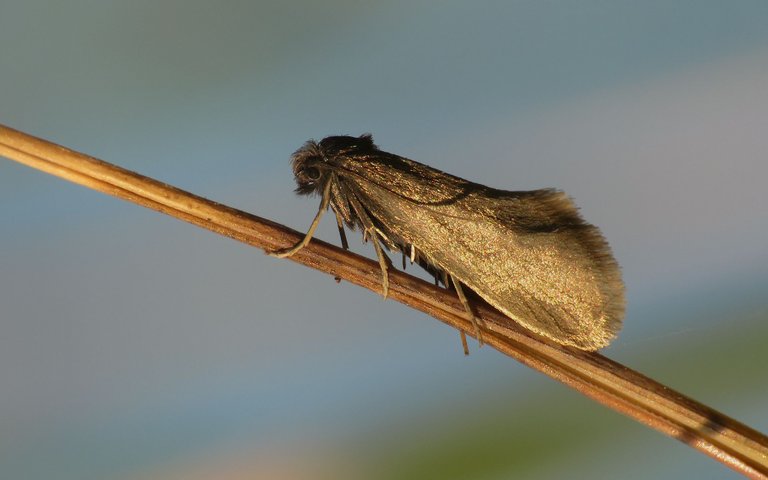
Thanks for your contribution to the STEMsocial community. Feel free to join us on discord to get to know the rest of us!
Please consider supporting our funding proposal, approving our witness (@stem.witness) or delegating to the @stemsocial account (for some ROI).
Please consider using the STEMsocial app
app and including @stemsocial as a beneficiary to get a stronger support.
@tipu curate :)
Upvoted 👌 (Mana: 11/22) Liquid rewards.
The blister beetle looks like a real monster in the first photography. Could be directly out of a horror movie.
:) Yes it has the right face and horns ... and the rest of the body as well.
It seems that the flora and fauna are the same as ours, but there are still differences in color and shape)
Wow......Nature is truly beautiful, just look at these wonderful creatures, the lady bettle seems to have many colourful species too...Nice work here
Love all the different ladybugs you found! When I saw the white flower, I thought Star of Bethlehem and yup, it was.. Love these posts!
:)
What a lovely collection of biodiversity. This is amazing nature and nature always amaze us with it's creations.
Loved the different creatures captured in these pictures and you captured very sharp colors too.
Thank you very much for putting the effort in shooting and sharing lovely nature with us.
Thanks :) Yes, the nature has always plenty of amazing stuff in store.
Nice shots!
It's quite hard for me to get nice shots with small objects without sacrificing the exposure, it comes out blurry most of the time.
Be careful of the hairy caterpillar, they're very itchy on the skin.
Thanks :) Yes, there are always problems with not enough light in macro ... on many shots I used the built-in flash of the camera, but I covered it with a piece of toilet paper to disperse a bit the sharp light of the flash ... that way I'm able to shoot at fast shutter speeds 1/500 to 1/1000 ... but this doesn't work with shiny insects, shiny surfaces don't look good nor realistic when photographed with the flash ... the blister beetle on the opening shot was photographed with a lot of patience (and a bit of luck) using only the ambient light and relatively slow, 1/30 shutter speed.
A toilet paper ha, thanks for the tip!!!
:)
what camera are you using?
I use the camera Canon PowerShot SX60 HS ... and the macro lens adapter Raynox DCR-250 Super Macro Snap-On Lens
Hmmmm... It seems like most people here who's into photography uses Canon. I use D3400 because the review was really good if you're a beginner.
Today, I finally learned a little bit of my camera using manual mode and the other buttons that is have been ignoring for more than three years, lol.
Is that your first camera or did you upgrade?
:D I did downgrade and upgrade through time ... used more complex DSLR camera and small compact ones before this ... I'm very satisfied with the current combination of camera and macro lens, it works good and is versatile ... It's great that you are exploring the manual options, that's the core of making photography. You have much more control over the process and a wider array of expression ... you can make the pictures look and feel in a variety of different ways.
Amazing closeups, and it makes me wonder if some of these were taken using your flash and the toilet paper trick you previously mentioned....
Absolutely yes :) about half ... or a bit more than a half of these shots were taken that way ... all the lady beetles photographs, ad example.